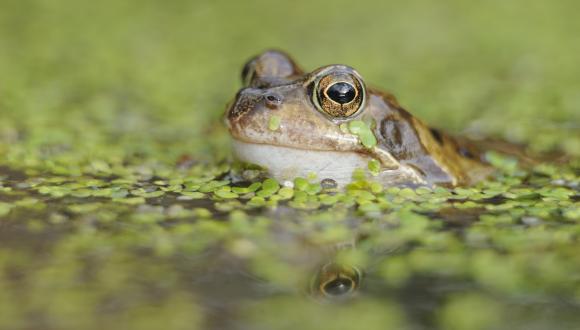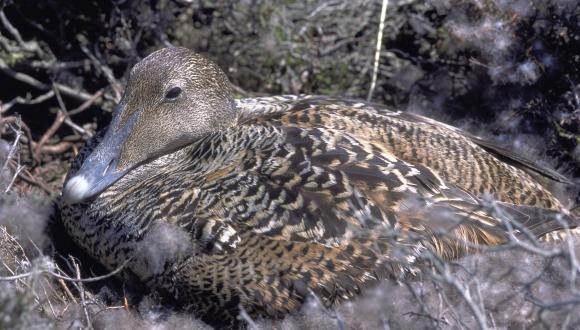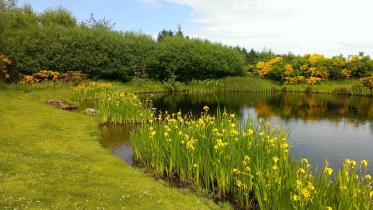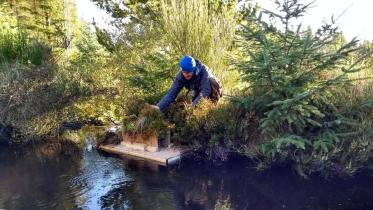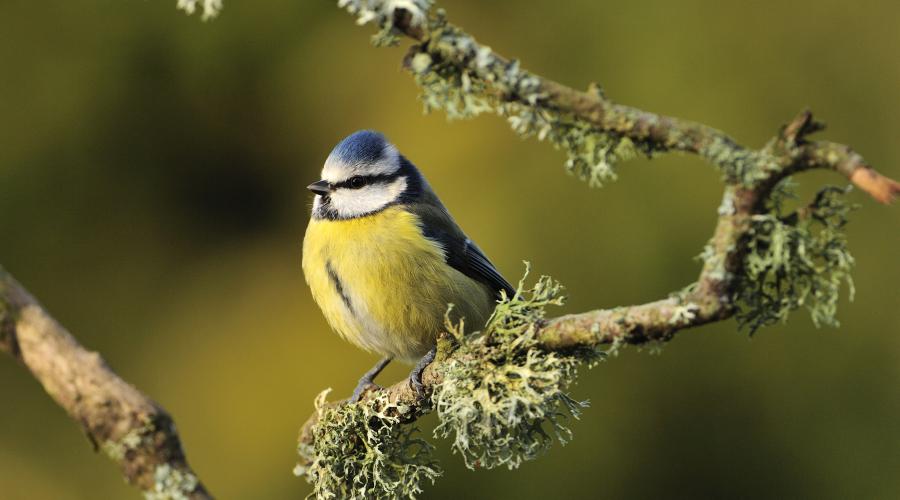
Why it's all or nothing for blue tits in spring
25 April 2019
If you’re listening out for the chatter of springtime chicks you don’t have too long to wait with blue tits among the first garden bird species to lay and hatch eggs. As the nesting season gets underway, NatureScot is sharing what makes blue tits special and asking members of the public to lend a helping hand to these popular garden visitors.
Blue tits are one of the most common bird species that people will find in their gardens. They can be easy to take for granted - until you discover what makes the species unique.
Unlike many other bird species, which raise multiple sets of chicks in a season, blue tits rear only one brood each spring and so only have one shot at successfully nesting. Females typically lay 8-10 eggs but can have up to 16 eggs in one nest. Peak laying takes place from April to early May each year, with the clutch incubated for 15 days. The birds time their breeding to ensure hatching coincides with the greatest abundance of food for the offspring but, with each chick demanding up to 100 caterpillars a day, it is a big gamble for this species.
Each of these seasons are vitally important to the population as blues tits only live for an average of three years, meaning each bird has only three chances to add to the overall population.
Blue tits also like to nest in “cosy cavities” and are well known for nesting in unusual places, such as hollow sign poles and cigarette butt bins. They certainly don’t need much space, with a 25mm hole big enough to for the adult bird to squeeze through. These expectant parents know such narrow entrances reduce the chances of predators getting in. These little birds are quite resourceful and will use a variety of nest sites, including old woodpecker nests, holes in trees and bird boxes.
Muir of Dinnet National Nature Reserve Manager, Catriona Reid, highlighted the importance of common garden species and the easy ways we can help birds like blue tits in our local area.
“Blue tits are a great species for people to look out for in their gardens and local nature areas. Helping birds during this time of year boosts nesting success which is highly important to blue tits as they typically only breed and nest just once a year.”
Those looking to help nesting blue tits this spring can do a number of things to help boost nesting success for these colourful garden visitors.
Putting out natural materials that can help birds line their nest is a great way to help out. If you have a hairy family pet, leaving some dog fluff or other animal hair out for birds will give some additional soft materials for birds to use. Even human hair from a hairbrush will do the trick. Make sure to avoid putting out synthetic materials as, while these may be soft and cosy, plastic fibres can be dangerous for wildlife and may end up as litter.
When placing a nesting box, it should be out of direct sunlight and out of reach of cats. Reinforcing nesting box entrances can prevent predators such as woodpeckers or squirrels breaking in to eat eggs or young chicks. Additionally, if you decide to paint it only coat the external surfaces and avoid lead-based paints or creosote that can be toxic to birds.
If you have garden space, ensuring there is an area that will offer cover for hiding and foraging is a good way to encourage many species of garden birds. These areas also create a space for invertebrates to thrive providing a great food source for hatchlings.
While caterpillars are ideal for young chicks, adult birds enjoy fatty foods. Feeding peanuts using wire mesh feeders, coconut or suet balls (removed from their plastic mesh bags first) and keeping feeders topped up will ensure that busy parents can grab an easy meal between feeding trips for demanding chicks.
